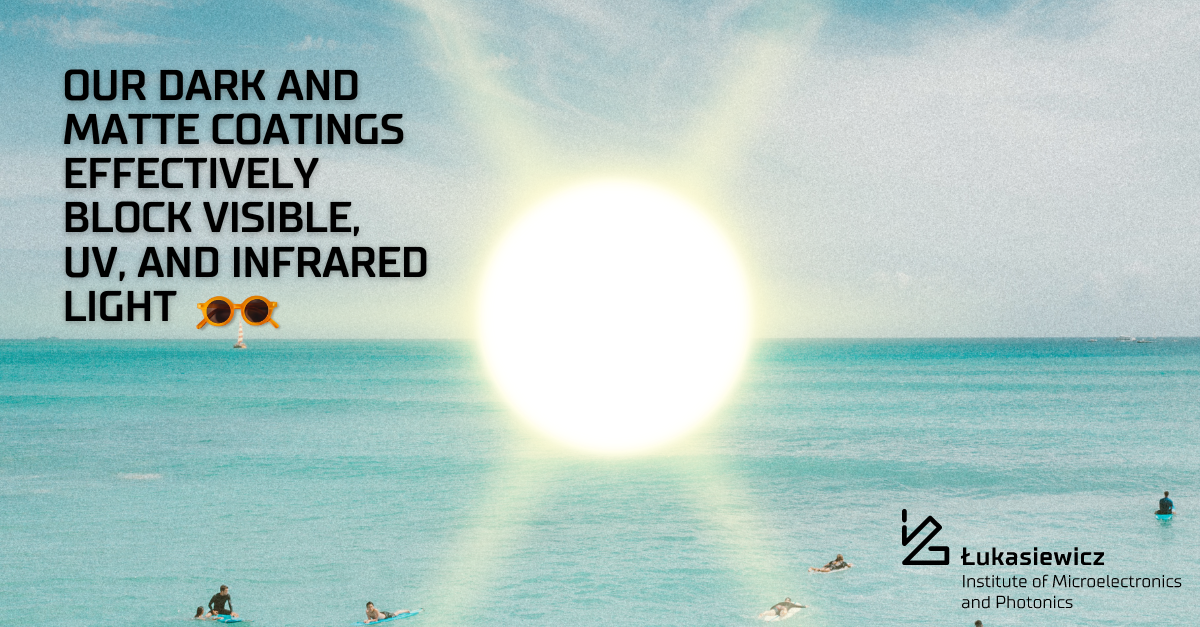On one hand – matte dark coatings, on the other – transparent and conductive coatings. All this can be done using zinc as the building block. Our researcher Michał Borysiewicz, PhD, DSc, develops these two extraordinary products in his laboratories:
Dark and matte coatings
It’s summertime so let’s talk about… sunblocks… The dark and matte coatings effectively block visible, UV, and infrared light. These coatings have various end uses and can be applied to different substrates such as flexible, polymeric, rigid, semiconductor, metal, or glass materials.
They can be used to cover any surface, including three-dimensional structures, and can be patterned using lift-off photolithography or etching techniques.
Thanks to their dark and matte features, they prevent the formation of reflections and are particularly useful for elements that need to remain hardly visible, such as housings for optical sensors which absorb scattered radiation. Additionally, the technology used for these coatings does not require high temperatures and is both safe for the environment and extremely versatile!
“My material is black because it has the right chemical composition, it is porous and absorbs light. Well, it is porous on the nanoscale, which is unique, because when depositing layers, you usually get dense layers without holes and powders that do not stick to each other are porous surfaces – but I can cover any surface with this material” – explains our researcher.
Transparent and conductive coatings
We all know that transparent and conductive coatings form the basis of all touch displays. But they can also be used in electromagnetic shielding – creating Faraday cages – elements that must remain transparent (e.g. canopies, lenses, speciality glasses, etc.).
At Łukasiewicz – IMiF, we provide vacuum-produced zinc oxide coatings doped with aluminum, allowing control over their refractive index through appropriate additional doping.
Importantly, these coatings are indium-free, making them a great alternative to indium-tin-oxide coatings, thus contributing to sustainable development!


